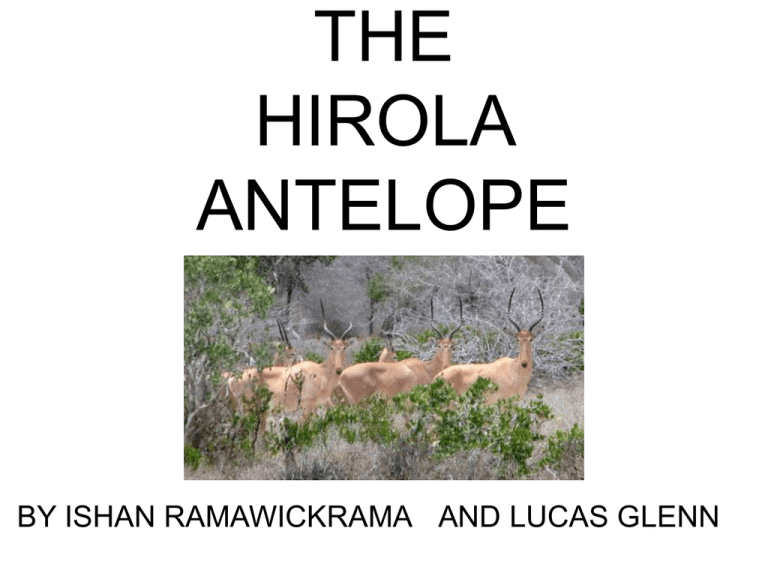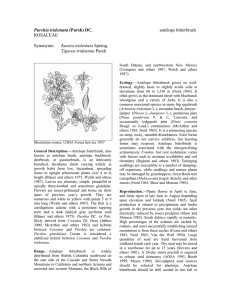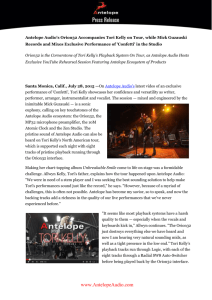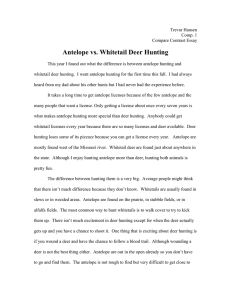The Hirola Antelope - World is your oyster
advertisement

THE HIROLA ANTELOPE BY ISHAN RAMAWICKRAMA AND LUCAS GLENN Appearance / Characteristics The Hirola Antelope have golden-brown hair, long legs and a long face. The white strip across its forehead makes it look like it is wearing glasses. The horns are curved and flare at the tips and can grow as long as 70cm. They stand approx. 100 to 125 cm at their shoulder – which is approx. the same height as a 9 year old at their shoulder (40 to 49 inches) They are also known as the four eyed antelope because of the glands under their eyes They are diurnal which means they are active during the day (not night). As a herd they graze in the mornings and early evenings. A herd can consist of one main male and two to sometimes 40 females. Sometimes there are herds of just males. Natural Habitat / Environment The Hirola Antelope live across a small range in parts of Kenya and Somalia, in Africa. The area they live in is an arid desert which has scrubs and grasslands. Fact: When our parents were young there were approx. 14,000 Hirola antelopes dotted all over Kenya and Somalia Cause of Extinction The Hirola Antelope is critically endangered. • Rough estimates put their numbers at only between 500 to 1200. • In 2007 the Hirlola Antelope was listed as one of the top 10 species to protect. • There are currently no Hirola Antelopes in captivity and a recent survey taken by aircraft – confirmed sightings of only 254 in the wild. • The major threat against the Hirola is poaching by humans and loss of habitat. • They also have to put up with droughts and cattle grazing to survive. Predators The Hirola’s predators are humans (poachers), lions, cheetahs and African wild dogs. Right after giving birth, the mother and newborn are very vulnerable to predators. Poachers kill the Hirola Antelope for its black spiral horns. FOOD The Hirola’s favourite food is newly sprouted grass just poking out of the ground. It competes with livestock for grazing grasses. The Hirola is crepuscular – which means it is able to go without water which is helpful during Africa’s droughts. What can we do to help the Hirola Antelope? 1. Reduce exposure to livestock which carry diseases which kill the Hirola Antelope 2. There should be more attention spent on monitoring them and their activities 3. Promote income generating eco-tourism for this special species, such as people paying to go on safaris to see them in their natural habitat. The money would then go to support conservation of the Hirola Thanks for watching!!!!











